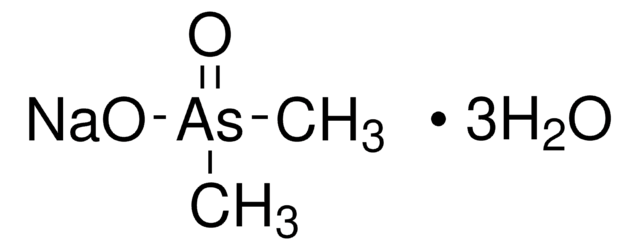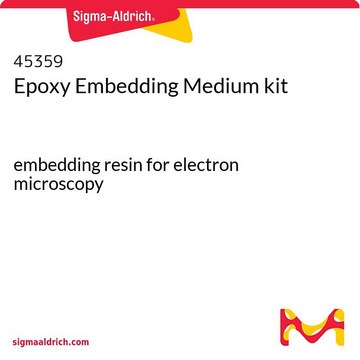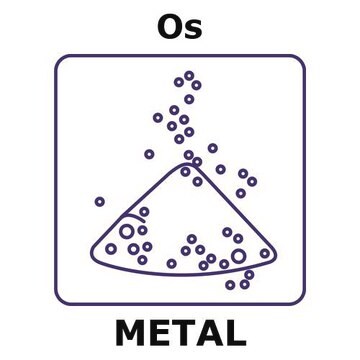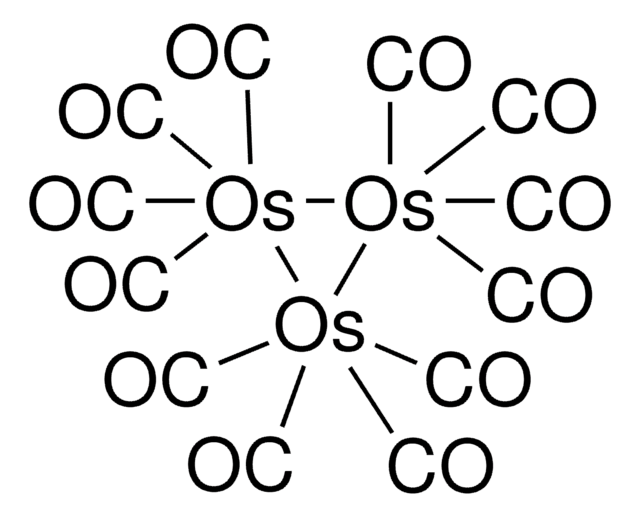O5500
Osmium tetroxide
Sealed ampule.
Sinónimos:
Osmium(VIII)-oxide, ‘Osmic acid’
About This Item
Productos recomendados
vapor density
8.8 (vs air)
Quality Level
vapor pressure
7 mmHg ( 20 °C)
form
powder
reaction suitability
reagent type: oxidant
bp
130 °C (lit.)
mp
39.5-41 °C (lit.)
SMILES string
O=[Os](=O)(=O)=O
InChI
1S/4O.Os
InChI key
VUVGYHUDAICLFK-UHFFFAOYSA-N
¿Está buscando productos similares? Visita Guía de comparación de productos
Categorías relacionadas
General description
Application
Biochem/physiol Actions
Other Notes
Related product
signalword
Danger
hcodes
Hazard Classifications
Acute Tox. 1 Dermal - Acute Tox. 2 Inhalation - Acute Tox. 2 Oral - Eye Dam. 1 - Skin Corr. 1B
Storage Class
6.1A - Combustible acute toxic Cat. 1 and 2 / very toxic hazardous materials
wgk_germany
WGK 1
flash_point_f
Not applicable
flash_point_c
Not applicable
ppe
Eyeshields, Faceshields, Gloves, type P3 (EN 143) respirator cartridges
Elija entre una de las versiones más recientes:
¿Ya tiene este producto?
Encuentre la documentación para los productos que ha comprado recientemente en la Biblioteca de documentos.
Los clientes también vieron
Nuestro equipo de científicos tiene experiencia en todas las áreas de investigación: Ciencias de la vida, Ciencia de los materiales, Síntesis química, Cromatografía, Analítica y muchas otras.
Póngase en contacto con el Servicio técnico








